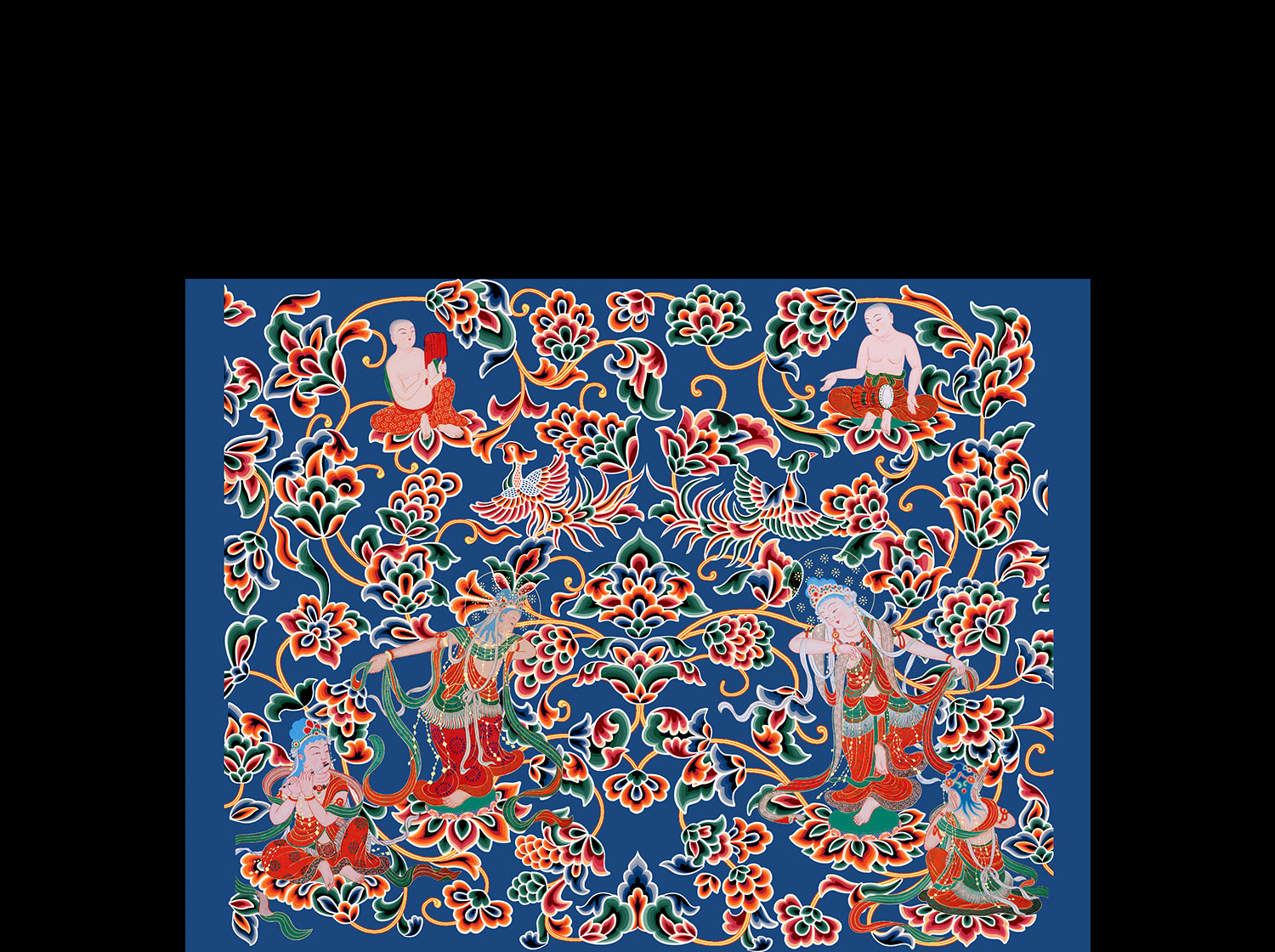Art of Byodoin

Founded in 1052, Byodoin is now an independent temple unaffiliated with any of the other major Buddhist temples. The temple is a UNESCO World Heritage Site, in part for the unique and historically important works of art that it contains. The Phoenix Hall was constructed in 1053 and represents the world in which Amida (Sk. Amitabha) Buddha resides, the Pure Land (Jodo). Viewed from the front, the design of the hall is reminiscent of a phoenix (ho-o) with its wings extended. Statues of phoenixes stand at either end of the roof ridge.
The hall contains a statue of Amida Buddha 2.77 meters tall carved from Japanese cypress and covered with gold leaf. The sculptor Jocho and his workshop created this Amida using the joined-wood technique known as yosegi-zukuri. The technique entails the joining together of smaller pieces of wood to construct larger, lightweight but durable statues. After Jocho and his team joined the individual cypress blocks together, they were carved and shaped, and layers of cloth, lacquer, and gold leaf applied to cover the statue’s joints. The final step gave the statue a celestial golden glow.
The support beams for the hall around the central statue are decorated with 52 small statues, known as “Worshipping Bodhisattvas on Clouds.” The carvings appear to be floating on clouds and are depicted playing musical instruments in honor of the Buddha as they travel through nirvana.
The walls and doors of the Phoenix Hall are richly decorated with scenes of the kuhon raiko-zu which depict the nine forms of the Amida Buddha welcoming the dead to the Pure Land. These depictions draw on the Amida Meditation Sutra, which teaches that, when they die, virtuous people will be visited in one of nine ways by Amida Buddha, depending on how virtuously they had lived.
The landscape depictions of the four seasons are the earliest surviving examples of raiko painting in Japan. Both the hall and the Amida statue are designated as National Treasures. The Phoenix Hall is depicted on the obverse of the 10-yen coin.

